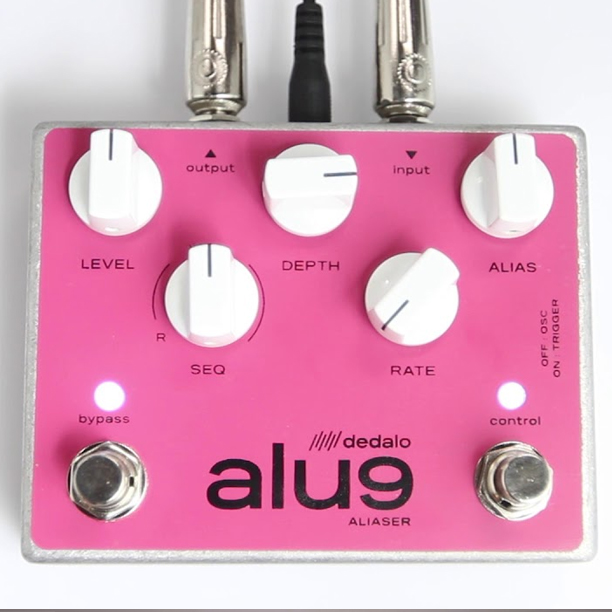
We shot a video of the Dedalo FX alu9 Aliaser at our NAMM 2018 Stompbox Booth (embedded at the bottom of the post), and we are happy to finally see the first produced videos appear.
This pedal hailing from Argentina belongs to the quirky family of lo-fi effects, but introduces some intriguing new features, like 32 sequences of oscillation and a Trigger Mode with cycles up to 16 steps.
Check out the video by TriPedal Reviews below.
For guitar, bass, synth, drum machine or anything that plugs!
- 9 bits µ-control sample rate reducer
- OSC Mode: 32 sequences of oscillation
- Trigger Mode with cycles up to 16 steps
- Random Modes Sample rate modulation via control switch
- Internal blend of filtered dry sound
- True Bypass
The core of the ALU9 is a u-controller that samples audio in 9 bits resolution, and allows to reduce the sample rate to remarkably low values, achieving intense transformations of the sound. Features
CONTROLS
Aliasing
The aliasing phenomenon consists in the aparition of phantom frequencies non-harmonicaly related (“alias”), when audio is digitized at low sample rates. Also called downsampling or redux, the lower the sample rate, or the higher the frequencies present in the signal, the more dramatic the effect results.
Operation
The sample rate can be modified in two ways: using the low frequency numerical oscillator, which generates arpeggios based on alias tones; and by the trigger, which generates an alias change every time a new note is detected. Both modes can be set at random, which introduces a random factor into the modulation. The low bit resolution of the audio adds to the characteristic sound of this pedal. To achieve a sound that is also musical and intelligible, the ALU9 adds back a proportion of dry audio, carefully filtered to enhance the depth of the effect.
Recommendations
Given the nature of the effect, the ALU9 responds better to simple signals with few prominent frequencies, so avoid applying it to complete or distorted chords, although it can be used satisfactorily on all types of instruments. Also, using distortion after the ALU9 can mask part of the effect.






















